The Gift of South Dakota
Subscriptions to South Dakota Magazine make great gifts!
Subscribe today — 1 year (6 issues) is just $29!
The Home Kids of Dell Rapids
 |
| Harold Kindred, Orville McDonald, Ed Kindred and Earl Hormann were a few of the orphans housed at the Dell Rapids Home. |
Note: The Odd Fellows Home, built in 1910 in Dell Rapids, was a refuge for orphans and elderly members of the Independent Order of Odd Fellows and their sister organization, the Daughters of Rebekah. In 2001, Amy Dunkle visited with a few of the former residents still living to learn what orphanage life was like.
The Odd Fellows Home was home in every sense of the word for about 100 children who arrived without either material belongings or the innate sense of security that someone would take care of them. In fact, for many of these youngsters, the Home in Dell Rapids was the last stop in a string of homes.
In 1927, Earl Hormann was nine years old, living on a farm southwest of Mina with his parents and his younger brother, Darwin. Then the boys’ mother, only 28, died in childbirth along with their infant sister. Days later, on a blizzardy February night, their house burned down. "Dad farmed us two boys out," recalled Earl Hormann. "Back in them days, it was pretty slim pickings. We went from house to house. Finally, they just couldn’t take care of us."
Ed Kindred’s dad, a fireman in Sioux Falls, died in the 1918 flu epidemic. His mother’s second marriage didn’t work out, and she couldn’t take care of Ed, then six, and his brother, Harold. Despite the turmoil in his early life, Kindred showed no trace of bitterness, no sense of being a victim at being brought to the Home in 1923. "They just put us there. We adjusted pretty good." Referring to his mother, he said only, "There wasn’t much love there for me and my brother."
Russell MacDonald was also six when he came to the Home from White River in 1922. Arriving alongside him were five siblings. Russ was three when his father, a farmer and veteran of the Spanish American War, died of tuberculosis. Their mother died of pneumonia.
 |
| Girls at the Dell Rapids Odd Fellows Home posed in their new overalls. |
Elaine Bokker lived on a ranch north of Bear Butte until her father died in a 1932 farm accident. She was six then, and her mother moved her and her sisters into town. Four years later, her mother died of scarlet fever. The girls’ grandmother had remarried, and her new husband came with his own family to raise, so the girls were deposited in Dell Rapids when Elaine was eleven.
They were a few of the South Dakota youngsters who spent their childhoods at the Home; they became known around Dell Rapids as the Home Kids. Despite the passage of time and the paths they took in the world, the memories of their first days remained clear.
"I was scared to death — cried my fool head out," remembered Earl Hormann. "My brother and I hid in the closet, crying. But there was a bunch of kids there besides us. We finally made friends with one another and all that good stuff."
In time, new Home Kids bonded with the other children and with the elderly people who lived at the Home. They experienced the simple joys of growing up and learned the invaluable lessons that would carry them through life. It was, in the words of Russell MacDonald, a good place, a good home, and good times.
The Home’s typical occupancy ran about 28 children and 15 elderly, according to Ed Kindred. "The old people had one part, and the kids usually had the north end. The old people were just like grandparents to us. When we first got there, there was maybe 10 of us. Bedtime was 7 o’clock at night, summer and winter. For the older kids, it was 9. They’d have a high school girl from downtown come up and read a story to us."
We just kind of stuck together, played like everybody else...
"Every meal, three times a day, we lined up in the hall at the north end, from the oldest kid in the bunch to the youngest," Kindred said. "We’d say the Lord’s Prayer, go into the dining room and the matron would say grace. The little kids had to sit with the matron. They taught us table manners. We had a nurse who took care of us. We were quarantined with measles, scarlet fever. They put a red tag on the door. We all had chores, even the little ones."
From scrubbing hallway floors to planting potatoes and butchering farm animals, the Home Kids learned to tackle their jobs. Their dishwashing skills were nothing short of legendary, said Roberta DeVaney, a Dell Rapids historian who died in 2009. "They had a reputation for really being able to wash a sink full of dishes in record time." Of course, with no transportation other than their own two feet, there wasn’t any alternative. Twelve blocks separated the Home from school. Youngsters got home at noon and had to eat dinner, do dishes, set the table for supper and make it back to school by the 1 p.m. bell.
"We didn’t fool around," said Darwin Hormann. He remembered swapping labor with 10 or 12 local farmers so no one had to hire workers.
But along with the work came plenty of fun. The Home bought a pony, Flossie, and a horse, Jim, that never stopped giving rides. The kids also adopted a pup, Buster, born on July 5, 1925. A farmer had put the puppies of a Newfoundland dog in a burlap bag, placed the bag in the horse tank to drown the puppies and then buried them.
"We heard something in the hog yard — two were still alive," said Ed Kindred. "We took them to Matron and begged her to let us keep one. He lived to be 20 years old. Wherever you saw the dog, you knew the Home Kids were around."
 |
 |
 |
| Ed Kindred, Elaine Bokker and Russell MacDonald — former Home residents. |
There weren’t any luxuries. No television, no radio. There was a phonograph that the boys would wind up so the girls could dance. And, said Ed, "We shared our toys. Mother sent a toboggan, sent it for Christmas, and it was community property. It only lasted half a winter. Most of our toys were stuff we made ourselves — slingshots, bows and arrows, little airplanes."
In time, the Home Kids managed to carve out a typical childhood. "We didn’t know any better," Elaine Bokker said. "We knew other people had parents. We just kind of stuck together, played like everybody else, met our friends downtown."
"I tell ya, we had a wonderful matron, Eleanor Kingery," Earl Hormann added. "She was very strict, but she was kind. I think that made the difference. She made us mind. We did a lot of foolish things, like sneaking out at night. We didn’t do anything wrong, just to prove that we could do it. We’d go swimming when we weren’t supposed to. We were the first ones to swim in the river when the ice was still in."
When it came to discipline, the boys who stepped out of line were forced to wear dresses, complete with bloomers. "I didn’t know if I was a boy or girl till I was eight or nine, I was in a dress so much,” laughed Ed Kindred. “We’d stuff the dress in the bloomers. But the kids never teased us."
One time, the Kindred boys ran away from the Home. Ed was about eight. They got as far as Lone Tree. Upon their safe return, he said, the brothers got a spanking and solitary confinement with bread and water. But the older kids snuck in food. "They were pretty tough," Ed said of the matron and others who meted out discipline. "If they caught you in the apple orchard when the apples were green, Matron had a big jug of castor oil. We all hated that stuff. Me and my brother, one time, we had to kneel on buttons with our chin up against the wall. That hurt."
Time passed, and the Home Kids went out into the world. Most of the boys served their country in World War II. They married, had children and settled into steady jobs. Ed Kindred was at Pearl Harbor in WWII, and made a career of military service. Earl Hormann became a truck driver after service as a medic. Darwin Hormann flew B-29s over the Pacific, and worked in construction when he came home. Russell MacDonald farmed and quarried stone. Elaine Bokker married her downtown boyfriend and was the mother she lost to her three kids. Wherever they went, Ed Kindred said, "Every one of those kids were successful in what they did. They were taxpaying citizens. Never had serious trouble."
He contemplated what exactly it was that built such a solid foundation for these children who had lost parents and homes, and weathered the Depression. "The Odd Fellows, they got us off on the right foot," he said. "When we left the Home, we knew we had two strikes against us, that times would be tough. We didn’t have anything and we didn’t expect to have anything."
As the Home Kids carved out their niches in life, Kindred said, they found they were just as good as anybody else. What’s more, despite the hard knocks early on, they looked back on their childhoods with fondness and appreciation — the discipline, the dishes, the small town of Dell Rapids, and the elderly Home residents who filled the role of grandparents. And, of course, with her castor oil and caring, matron Eleanor Kingery.
Years later, Ed Kindred mused about how lucky he and his fellow Home Kids were. "The penitentiary," he said, "it’s full of ‘em up there. Kids that never had any love at all."
Editor's Note: This story is revised from our July/August 2001 issue. To order a copy or to subscribe, call 800-456-5117.


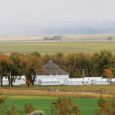
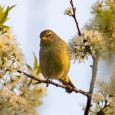
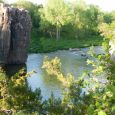
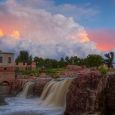
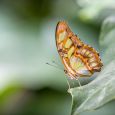
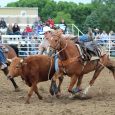


Comments
I grew up in the late 40's and 50's, didn't have much but had great parents and have always been thankful for that. Kudos to the people in this article!
If you are talking about the 5 children who were sent to the home in 1922, that would be Russell MacDonald and I have information about his family .